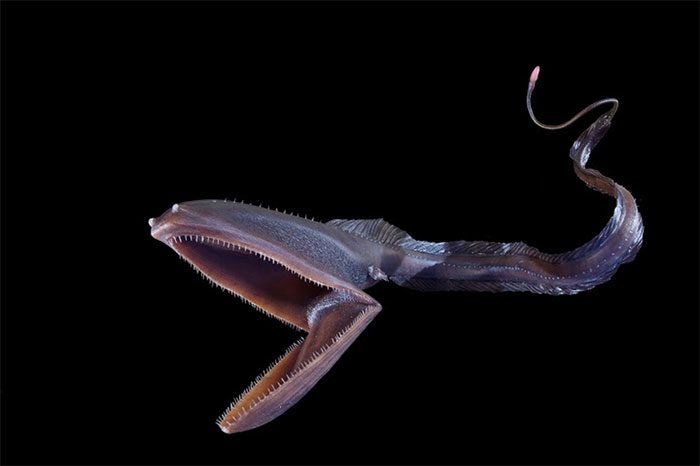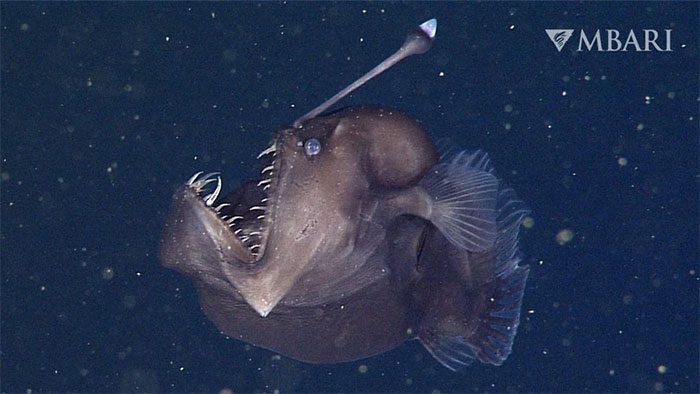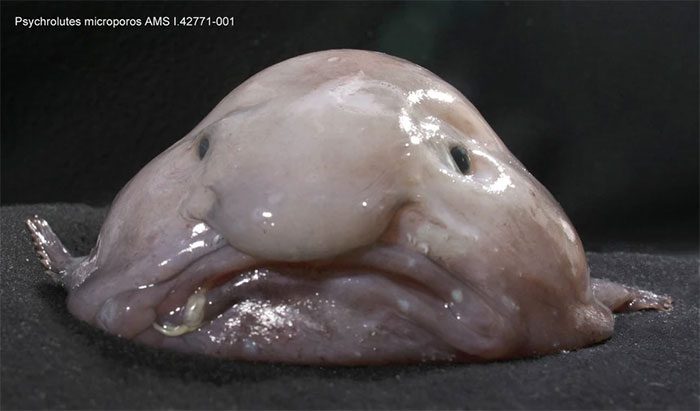Deep-sea fish species have developed unique characteristics to thrive in their harsh living environments.
Many fish hiding at the ocean floor have appearances reminiscent of extraterrestrial villains from horror films, with enormous teeth, bodies that glow in the dark, and bulging eyes. But why do these fish possess such unusual traits?
In fact, the strange appearance of deep-sea fish largely reflects the harsh environment they inhabit. Starting from a depth of 200 meters below the surface, only a small amount of light can reach these depths, if any at all.

Sloane’s Dragonfish (Chauliodus sloani).
Additionally, this area has a high-pressure system, low food availability, and temperatures that are much colder than the rest of the ocean, with an average temperature just above freezing at 4 degrees Celsius.
Fish biologist Mary McCarthy, who currently works at the Monterey Bay Aquarium in California, states: “The deep sea is a truly harsh place to survive, so many species have had to adapt to certain characteristics of that environment.”
With scarce opportunities to find food, deep-sea fish have developed traits that help them catch prey, one of the most fearsome being their gigantic teeth.
For example, the Sloane’s Dragonfish (Chauliodus sloani) has such large fangs that it cannot close its mouth, or it risks damaging its own brain. Moreover, these razor-sharp teeth are also translucent, which helps conceal their “weapons” from prey.

Pelican Eel with an “unusual” wide mouth.
Other deep-sea fish species, such as Pelican Eel (Eurypharynx pelecanoides), have a unique mouth structure that, when expanded, occupies a large portion of their body, allowing them to capture and swallow fish drifting in the ocean waters.
Some deep-sea predators also possess a secret weapon that makes them a magnet for prey: bioluminescence – the ability to produce light. A prime example of this trait is the anglerfish – a type of fish featured in the popular animated film “Finding Nemo”, released in 2003.
These nightmarish creatures lure prey by using the light emitted from a lure attached to their heads, similar to bait on a fishing rod. This light can attract prey partly because other sea creatures think they are about to devour a small glowing organism (while in reality, they are about to become a meal).

Anglerfish with bioluminescent capability.
However, attracting prey is not the only advantage of bioluminescence, which can be seen in over 75% of deep-sea fish. According to a study published in Nature in 2017 by researchers at the Monterey Bay Aquarium Research Institute, some deep-sea fish, such as the giant bristlemouth (Argyropelecus gigas), can fade and brighten to match the surrounding light, using bioluminescence as a camouflage mechanism to hide from predators.

Blobfish changing shape when brought to the surface.
Another common characteristic of deep-sea fish is their fragility. Living in oceanic waters off the coasts of Australia and Tasmania, the blobfish (Psychrolutes marcidus) resides at depths of 600 to 1,200 meters, where the pressure can be over 100 times that at the ocean surface.
To survive under this immense pressure, the blobfish has adapted with a uniquely soft body, lacking a strong skeleton. This is why when a blobfish is brought to the surface, it collapses, transforming into a “gelatinous” creature with a perpetually frowning face – an appearance that earned it the title of “the world’s ugliest animal” in 2013.


















































